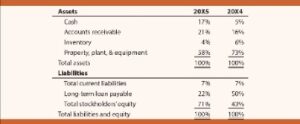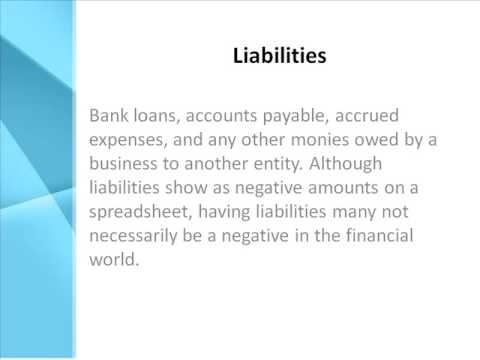
Utilizing the software’s features for payroll item setup and liability management streamlines the process and enhances financial reporting capabilities. Managing and paying payroll liabilities in QuickBooks Desktop involves accurate tax calculations and streamlined payment processing, ensuring comprehensive payroll management and compliance with tax obligations. Leveraging the software’s features streamlines the payment process and enhances financial reporting capabilities. Configuring payroll liabilities in QuickBooks Online entails the setup of tax forms, ensuring accurate financial reporting, and adherence to compliance requirements.
What are the Different types of Payroll Journal Entries?
From identifying the need for adjustment to making amortization necessary changes in payroll setup and reconciling liabilities, we will cover the essential steps and best practices for each scenario. By accurately inputting employee information, wage rates, deductions, and taxes, QuickBooks Desktop facilitates precise calculation and recording of payroll liabilities. The software allows for customization of payroll items to suit specific business needs, contributing to meticulous financial record-keeping. The seamless record-keeping functionality provides a comprehensive history of all payment transactions, simplifying audits and ensuring accurate financial records. Establishing payroll items within QuickBooks Online involves configuring essential components such as employee records, automation of transactions, and categorization of payroll expenses. By following this method, you can conveniently adjust payroll liabilities within the Payroll Center, eliminating the need to navigate through multiple menus or accounts.

Apple M1 Chip vs Intel: The Two Powerful Processors Compared
- Regarding tax deadline management, QuickBooks Online‘s automated reminders and filing assistance stand out, whereas QuickBooks Desktop requires more manual tracking.
- Using the Chart of Accounts to adjust payroll liabilities provides you with direct control over the specific liability accounts related to your payroll.
- They’ll be able to do a screen share to review your account to see why this keeps happening.
- It involves setting up various deduction types such as taxes, retirement contributions, health insurance, and other withholdings, ensuring accurate and consistent payroll processing.
- By following this method, you can conveniently adjust payroll liabilities within the Payroll Center, eliminating the need to navigate through multiple menus or accounts.
By setting up tax reporting parameters, businesses can accurately report payroll taxes to the relevant authorities. QuickBooks Desktop allows users to establish tax how difficult is passing acca an honest review profiles for federal, state, and local tax reporting. The platform provides tools for managing tax payments, facilitating the seamless transfer of funds to fulfill tax obligations. Recording manual payments for payroll liabilities in QuickBooks Online enables accurate tracking of tax deposits and ensures meticulous management of financial records.
QuickBooks Online provides user-friendly options for these adjustments, allowing businesses to customize their payroll settings efficiently. It is critical to consider the implications of these changes, including potential impacts on employee paychecks, tax filings, and financial reporting. By using QuickBooks Online for creating payroll liabilities checks, businesses can streamline their payment processing procedures, ensuring that employees are paid in a timely and organized manner. The payment options differ, with QuickBooks Online offering more flexibility in methods such as direct deposit and e-payment, while QuickBooks Desktop primarily focuses on check payments. Regarding tax deadline management, QuickBooks Online‘s automated reminders and filing assistance stand out, whereas QuickBooks Desktop requires more manual tracking. These disparities contribute to the distinct experiences users encounter when managing payroll liabilities in each platform.
Compliance adherence ensures that businesses meet legal requirements and avoid potential penalties and fines, promoting financial stability and seamless operations. Where I need help how do I determine which tax liability account to select I haven’t been able figure it out where I got the balance. Once you’ve found its cause, you can follow the specific steps for your situation in our Scheduled liabilities payroll show as overdue or in red article. The steps provided by my colleagues are how to address a scenario if payments were never recorded in QuickBooks. However, if you’re referring to your adjustments that aren’t showing on the report, you’ll want to make sure accrual accounting that the details are correct. If it’s accurate, you can run the Verify and Rebuild Utility Tools to fix data issues on your company file.
This option provides a straightforward and user-friendly way to make adjustments quickly and accurately. QuickBooks Desktop offers robust financial reporting tools, allowing users to generate diverse and customized reports to analyze payroll liabilities. In contrast, QuickBooks Online provides a more streamlined approach, with access to standard financial reports.
How To Set Up Quickbooks
Managing and paying payroll liabilities in QuickBooks Online involves electronic payment processing, tax deductions, and seamless record-keeping for accurate financial management. Leveraging the software’s features streamlines the payment process and ensures compliance with tax obligations. This process includes setting up tax forms such as W-2, W-3, 941, and 940, which are crucial for reporting employee wages, federal income tax withholding, and employer tax obligations.
Step 4: Review and Verify Adjustments
First, I want to make sure your QuickBooks company file gets the full functionality of payroll updates. If you’re still having issues with these liabilities after trying the recommendations from my colleague, then I suggest contacting our Customer Support Team. They’ll be able to do a screen share to review your account to see why this keeps happening. This will help you keep track of your payroll details and history, especially at year ends. I have followed these instructions and these are still showing up in liabilities to be paid. Dancing Numbers helps small businesses, entrepreneurs, and CPAs to do smart transferring of data to and from QuickBooks Desktop.